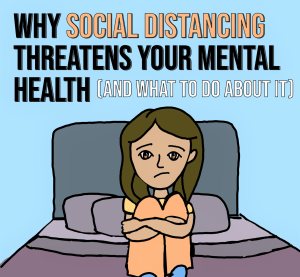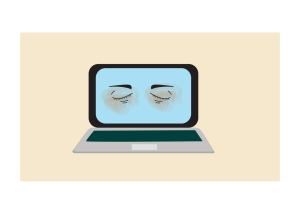How the Pandemic May Be Affecting Student Burnout and Mental Health
Students face an increased risk of stress and burnout as they continue to take classes online
Students have faced an increasing level of stress and burnout as the pandemic has raged on.
April 13, 2021
In a normal year, with the passing of midterm season and the mental rejuvenation that comes with spring break, students would be spending their time in pre-finals bliss, enjoying the warmer weather and blooming flowers. However, the pandemic prompted the university to cancel spring break, and now students find themselves pushing through exams, papers and lengthy Zoom meetings with seemingly no end in sight.
At this point in the semester, feelings of exhaustion, stress and anxiety are normal for students, but this year burnout is a worsening plague, especially for college students.
What Is Burnout?
In the 1970s, American psychologist Herbert Freudenberger coined the term “to describe the severe stress and high ideals in ‘helping’ professions,” such as those in the medical field. The term has since come to apply to any person affected by high-stress jobs and being overworked. However, disagreements in defining burnout have left experts unable to clarify what it is, how to diagnose it and how common it is.

Despite the lack of clarity, current definitions recognize three main signifying categories: exhaustion, alienation from activities and reduced performance. The University of the People describes student-specific symptoms of academic burnout, which have been organized under the three aforementioned categories:
Exhaustion caused by high levels of work-induced stress and pressure can be both mental and physical. Someone who is burnt out may experience:
- Emotional drainage.
- Fatigue or insomnia from an irregular sleeping schedule.
- Muscle and headaches from sitting at computers for too long.
- Weakened immune system.
Alienation is a symptom characterized by:
- Emotional distancing from work and things that one used to enjoy.
- Pushing away friends and colleagues due to increased irritability.
Reduced performance refers to how daily tasks are affected by:
- Decreased abilities to concentrate.
- Difficulty finding motivation.
- Inability to meet important deadlines.
Poor performance may also be caused by illness brought on by a weakened immune system due to exhaustion.
Diagnoses and Data
Distinguishing burnout from other illnesses and measuring its presence is difficult because its symptoms are so ambiguous and diagnosis is performed through self-assessment questionnaires.
Despite this, some recent studies on how the pandemic has affected people nationwide can provide insight into just how widespread and severe the drop in mental health is. An article from the January issue of Chemistry & Engineering News highlights the toll of the pandemic on college students, citing data from studies done in the spring and summer of 2020.
One study by the American Psychological Association found that Gen Z adults (age 18 to 23) have been most affected by the pandemic, in addition to societal stressors and the experience of transitioning into adulthood.
With universities and colleges utilizing remote learning, students are spending more time in front of their computers. Zoom and videoconferencing require more mental effort than regular in-person classes, which also contributes to burnout.
The past year has certainly been stressful and the future remains uncertain. However, burnout is preventable.
Why Is This Significant?
The consequences of burnout are both mental and physical, and the effects of COVID-19 on students’ academic and everyday lives have certainly contributed to increased stress levels.
While academic burnout is expected at this time of the school year, it is important to understand that it also shares symptoms with other mental illnesses, like depression. Because no singular definition of burnout exists and diagnoses are often self-assessment surveys, it can easily be misdiagnosed. Moreover, other mental illnesses can be mistaken for burnout.
The main difference is that burnout is usually caused by work or school-related stress, while depression and other mental illnesses can be affected by all aspects of one’s life. If an individual is experiencing symptoms of burnout, it might be a sign to seek help or counseling.
Students on campus can contact Counseling and Psychological Services, or if any symptoms are accompanied by feelings of hopelessness and thoughts of suicide, students are encouraged to contact the National Suicide Prevention Lifeline.
Although Fordham has announced a return to in-person learning in the fall, the mental toll of the pandemic and remote learning may linger into the next year. The past year has certainly been stressful and the future remains uncertain. However, burnout is preventable. Recognizing the symptoms, taking breaks, setting reasonable goals and making time for enjoyable activities are all ways to mitigate stress and reduce the likelihood of burning out.
If you or someone you know is at risk of suicide, please contact the number below immediately.
National Suicide Prevention Lifeline (NSPL)
1-800-273-TALK (8255)
Fordham University, President McShane and The Observer encourage Fordham students to reach out for support or to get help on campus by contacting the numbers listed below.
Counseling Center:
Rose Hill: (718) 817-3725
Lincoln Center: (212) 636-6225
Campus Ministry:
Rose Hill: (718) 817-4500
Lincoln Center: (212) 636-6267
Students may also contact a commuter assistant, resident assistant or resident director at any time to request assistance or to talk, and can contact Public Safety at (718) 817-2222 for assistance at any time.














